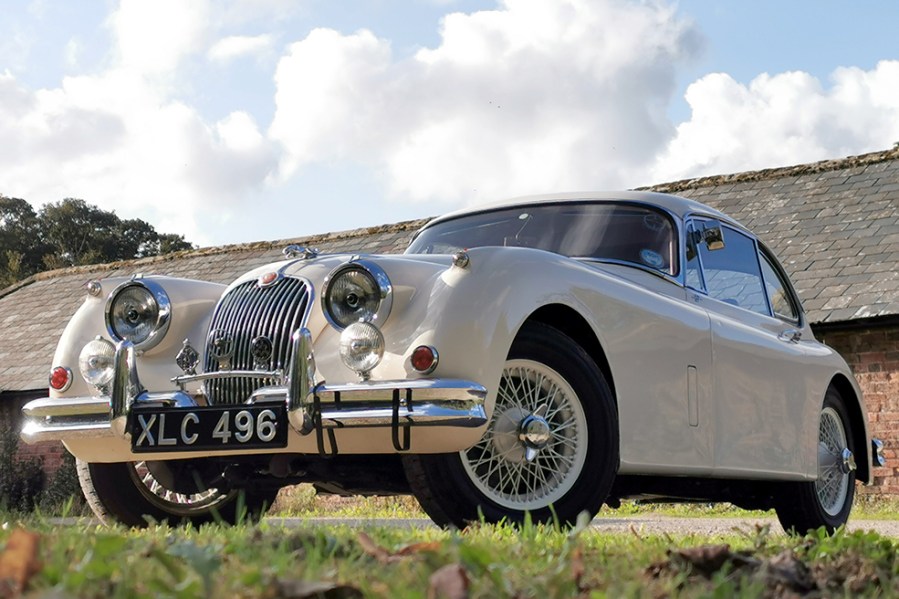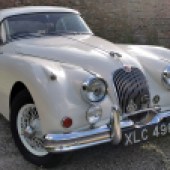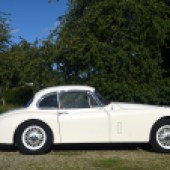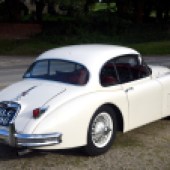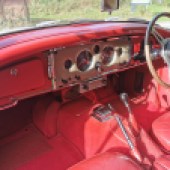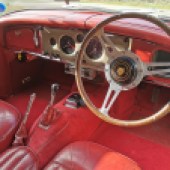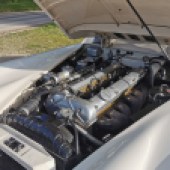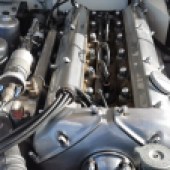We drive a storied 1959 Jaguar XK150S with just two owners from new and a colourful rally history
Words and images: Jon Burgess With thanks to: Classic and Sports Car Centre
Having proved a runaway export success, Jaguar pushed through a final iteration of the XK roadster series: the XK150. Retaining an improved and simplified separate chassis, much of the panel tooling from the XK120 and XK140 was kept except where improvements necessitated: a wider grille and raised front wings were key alterations.
Boasting a wider cabin, courtesy of a 100mm central extension, and a single piece screen over its forebears, only fixed and drophead body styles were available at launch in 1957; open two-seater (OTS) fans had to wait another year.
Although beaten to the punch by Triumph’s TR3, the XK150 nevertheless made waves with its standard-fit Dunlop disc brakes; unlike the Canley car, said rotors were fitted fore and aft.
Jaguar kept the XK140’s 3.4-litre, twin-cam straight-six, but gradually uprated the power output for SE and S trim levels: the former peaked at 210bhp (as opposed to 190), while the 1958-onwards S [as tested] saw 250bhp at 5500rpm, thanks to a straight ported, gold coloured head, three SU HD8 carburettors, a free flow inlet manifold, higher compression (9:1) pistons, lead bronze bearings and a lightened flywheel.
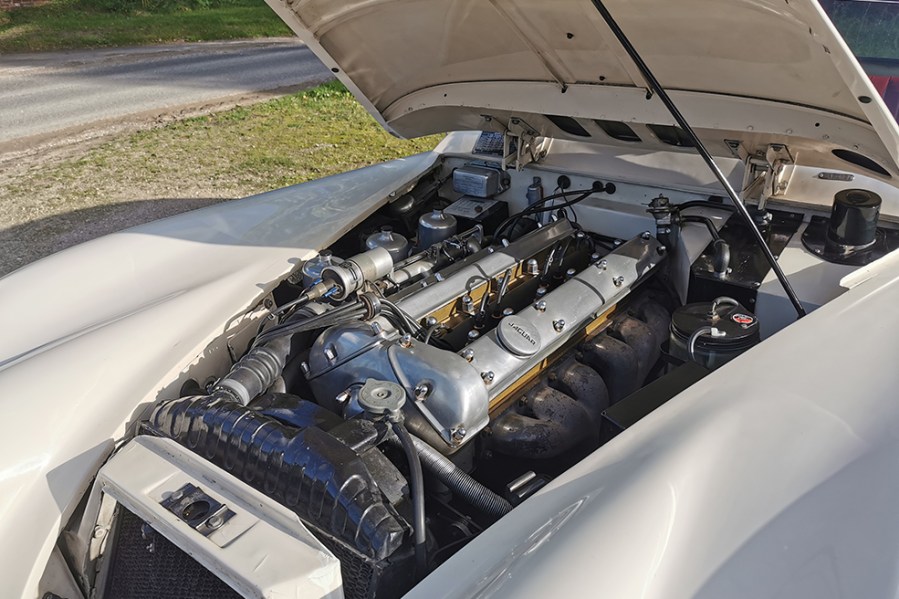
Between 1959 and 1960, a new 3.8-litre (3781cc) variant of the XK engine, specified for the MkIX saloon, was made available to XK150 customers. Backed by calls from more power from the United States (whose domestic small-block V8s were outperforming the XK) the 3.8 SE and 3.8 S marked the final evolution of the XK150: with 220bhp or 265bhp available respectively, it marked the end of a wonderful sports car legacy.
Nearly 65 years is a heck of a long time for a car to accrue history – and Classic and Sports Car Centre’s UK-market Jaguar XK150S has done so with aplomb. Subject to a body-off restoration in 1980, it was sold to its second owner eight years later, who had the car put back together using the parts the vendor rebuilt but never reassembled.
Resprayed from Pearl Grey (as supplied) to white, the continued work was documented in a huge two-volume photographic album, alongside a service manual, a pile of old tax discs, and a Jaguar Daimler Heritage Trust heritage certificate. Once completed, the XK accrued more than 42,000 miles across Europe on various historic vehicle rallies – a testament to the quality of its restoration.
More than three decades later, there’s few signs of the life it’s led: the paint on the boot and roof is a little flat, there’s the odd tired rubber seal, (such as those on the wing-mounted parking lights) and the brightwork around the windscreen is dull. Those evocative boot badges, celebrating Jaguar’s Le Mans wins, are crazed but looked original.
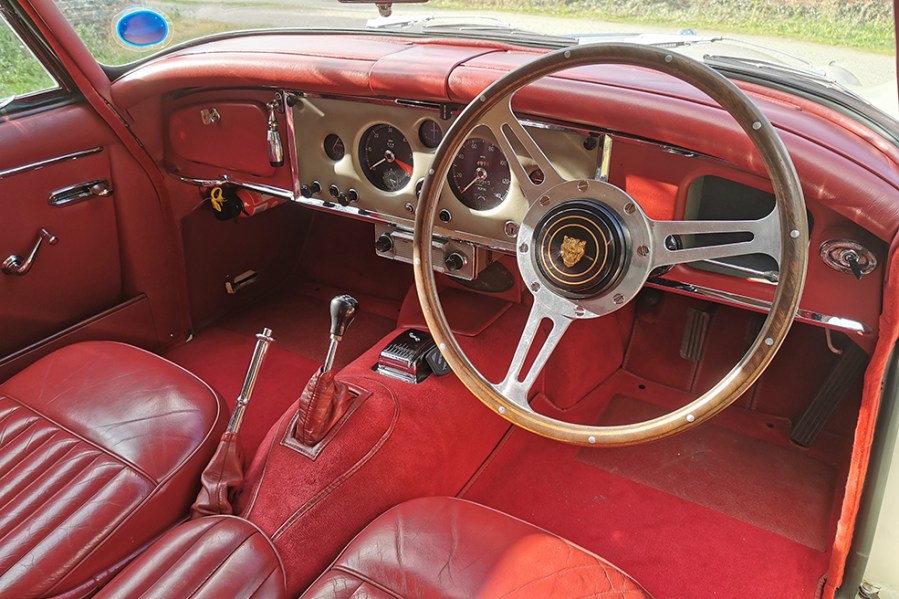
Very minor caveats aside, the panel fit very good. A tiny dent on the passenger’s side near the door-mounted ‘S’ badge and some touched up stone chips on the bonnet (and scuttle) are the only evidence of an exciting pan European rally career. The boot lid is ever so slightly proud on one side, but could be adjusted, and the aluminium doors are free of distortion. Neither is there any rust where the rear wings bolt to the chassis. Its bumpers and (optional) badge rack shine, as does the grille. It’s not concours, but this car is, nevertheless, far more interesting than the countless show queens brought out once a year for judging.
Like the rest of the car, the gold-headed, 3.4-litre XK straight-six appears used – and enjoyed – but never neglected. Leaks, witness marks and low levels are absent. If anything, the red-leather-and-carpet interior, topped by an uncracked wood-rimmed Moto-Lita steering wheel and retrimmed by specialists Suffolk & Turley, is holding up even better than the exterior and chassis – its retractable foot vents also work.
As for the headlining, it needs a good clean, but is otherwise undamaged. Apart from a lightly worn driver’s seat cushion and an inoperative map reading light, everything else works well.
There is no timing chain rattle from the engine when started from cold, or when warmed through. Few things were quicker on British roads in 1959 than a XK150S, and its performance remains impressive in 2023, aided by a short Salisbury 4HA diff (4:09 final drive) that runs without complaint.
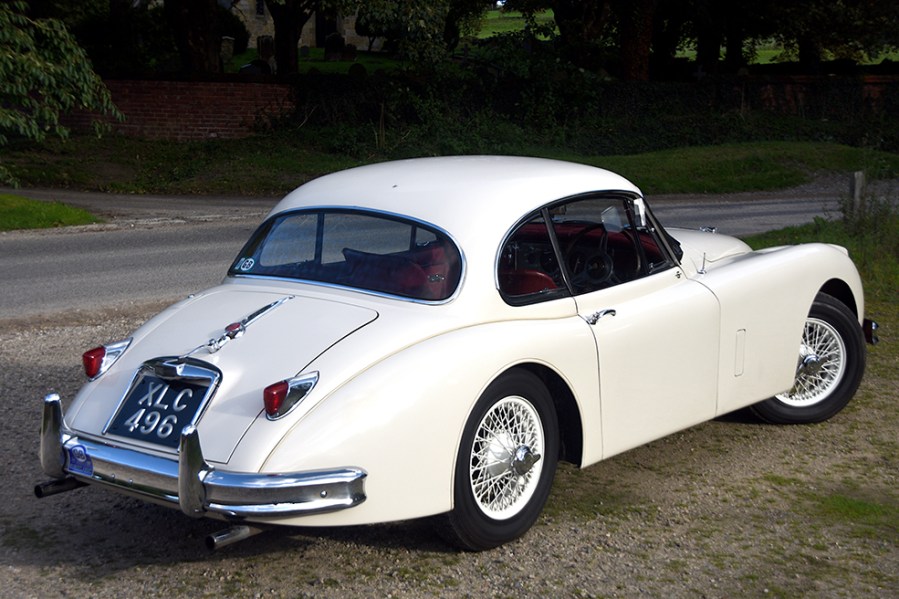
The fly-off handbrake, notoriously poor in XK150s, is properly adjusted and functions as intended; ditto the four-speed, close-ratio Moss JLE gearbox. Provided you don’t rush the change, the XK has enough torque that stopping and setting off in second (very much still intact) is fine should you not want to double declutch for first.
Otherwise, the rack-and-pinion steering is heavy but responsive, not marred by kickback or lag. The power of the car makes you very aware of how (comparatively) skinny the 185-15 Michelin X radials are for a car with 250bhp, but the Dunlop disc brakes pull the car up squarely.
Only 199 fixed head coupe XK150S 3.4s were made – and this has to be the best travelled of the survivors. Conversely, it must be in the running for an XK with the fewest owners on its log book, and the 3.4 S is most desired by enthusiasts. Leave the (few) blemishes as-is and enjoy: this cat clearly has a lot of life left in it.

